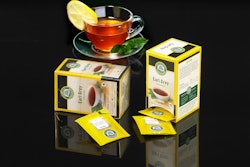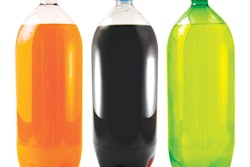As a technical resource in a design firm that focuses on helping clients develop market-changing packaging for their products, I believe that it’s important to do what we can to design sustainability into a package early on in the process. This is a far more effective approach than trying to quickly add on a sustainability Band-Aid fix once the product or the package is halfway through design. Inevitably someone asks the question late in the game, “Have you thought about sustainability in the design of this pack?”
In order to ensure we are on the same page, it’s essential for us to all have a clear understanding of what I mean by the term “sustainability.” I define sustainability as the commonsense notion that long-term prosperity and ecological health not only go together, but they also depend on one another. Sustainability means long-term cultural, ecologic, and economic health and vitality. To put this another way, sustainability is about actions that are ecologically sound, economically viable, and socially just and humane. Sustainability is a systematic way of thinking, not just an add-on approach of environmental consideration.
To me, “packaging” sustainability means understanding the chemistry of the materials that you select for your packages and the impact that they have on the environment, including the costs associated with obtaining and disposing of them, and the logistical implications of transporting them from place to place, either as raw materials or as finished packages.
One of the tools that can be utilized to help the designer and packaging engineer evaluate the sustainability implications of packaging choice made during the course of a package design and development project is a Life Cycle Analysis, or LCA. An LCA is a technique to assess the environmental aspects and potential impacts associated with a product, process, or service by:
• Compiling an inventory of relevant energy and material inputs and environmental releases.
• Evaluating the potential environmental impact associated with identified inputs and releases.
• Interpreting the results to help make a more informed decision about the human health and environmental impact of products, processes, and activities.
LCA cost and complexity
Undertaking an LCA can seem like a daunting challenge, and its complexity should by no means be underestimated. But it can serve as a useful tool in the arsenal of the designer or the package engineer.
There are many degrees of thoroughness of an LCA. Depending on different assumptions, inputs, and boundaries, the comprehensiveness of the picture that an LCA provides can vary in its detail. However, the idea of looking at the choice made for the design of a package from cradle-to-grave or cradle-to-cradle is critical to understanding the package’s sustainability implications.
The cost to conduct an LCA on one package/material concept alone early in the design process can be “challenging.” However, there are a number of new analysis software packages on the market, and more under development, that incorporate the basic principles and methodologies of a full-blown LCA at a more reasonable cost. The downside of some of the less detailed approaches is that the more you simplify the model and the assumptions made, the foggier the picture of sustainability they present. But even though the detail may be somewhat diluted in its impact and less than comprehensive, the general guidelines that are produced can be used to help steer the design process in a more sustainable direction, given the choice of numerous paths to pursue.
Case study: Full-scale LCA of food production business
I recently attended a conference where a case study of an LCA undertaken to assess the carbon footprint of an entire food production business was presented. This LCA included packaging, the production of the foodstuff itself, energy use, distribution, consumption, and disposal. Now this study was much broader and more complex than what I am advocating be utilized early on in the development process, but I think it highlights the value of an LCA in changing perceptions about what the real sustainable choice is, versus what may have been though to be the problem. It reveals science-based priorities to counter thoughts on where efforts should be focused based on misguided public pressure on what turns out to be minor issues.
The LCA undertaken in this particular case was broad in scope, taking into account not only direct operations, but also all inputs and outputs (inputs include foodstuffs and their growing, transport, etc.; outputs include meals and their distribution, cooking, etc.) for the food production business.
A carbon diagram of the business was created, and the carbon footprint of each operation was assessed. The results were then broken down into three scopes: activities outside of the business; electricity used by the business; and the business’s own operations.
The total annual carbon footprint of the business was found to be 139,000 tons CO2eq. Of this, direct carbon impact of the business (electricity used by the business and the business’s own operations) was relatively small, representing only 12% of the entire carbon impact. Indirect carbon impacts dominated the results (mainly foodstuffs growing/supply), representing a full 88% of the carbon footprint.
Meat supply was found to represent a full 43% of the carbon footprint. Transportation and distribution was found to represent 21% of the total. Energy for production (electricity and gas) represented 9%, while packaging represented only 7% of the entire carbon footprint of the business, much less than what the initial perception was prior to the LCA.
The study revealed that while packaging might have been one of the most visible components of the carbon footprint of the product, it was the product itself, its transportation and distribution, and the energy required to produce it that had the biggest impacts on the company’s carbon footprint. While the perception before the LCA might have been that to reduce the company’s carbon footprint, the packaging should be changed, the LCA revealed the reality that the most impact, from a carbon footprint-sustainability perspective, could be gained by focusing on improvement efforts on reducing the carbon footprint of the product and its distribution.
Early-on LCA analysis of package options
In the same way that the full-scale LCA helped the food production business mentioned in the case study understand what the largest contributors to the carbon footprint of their products were and where to focus efforts to reduce their overall carbon footprint, a cursory LCA, conducted early on in the design and development process, can help the designer or the package engineer understand the implications of the choices that are made for packaging material selection and form.
In the early stages of a project, the important part is to consider all of the available options, quickly, and make some decisions so that design and development can move forward. Those decisions of what material or form to pursue need to take into account factors such as functionality, product compatibility, and end use. Sustainability of the materials or forms to pursue should also be a factor in the initial considerations.
By conducting a cursory LCA on the options under consideration, the field of choice can be narrowed down from a multitude to a smaller pool of ones that make the most “sustainable” sense, rather than relying on simple intuition to select materials. For instance, in the beginning of a project, the “gut” reaction might be that paperboard would be the more sustainable choice for a new package, when the reality might be that the use of a bioplastic would be a better choice, because it would better protect the product from conditions encountered in distribution and storage, resulting in less waste through the supply chain than the paperboard substrate could provide. This information could be gained from conducting a cursory LCA, based on industry-standardized data on the two materials in the early material selection phase.
Some of the newer LCA tools coming into the market make use of industry-standardized data to help assess the environmental impact of a material choice. This information is more acceptable for use in the early-on LCA analysis of package options. The last thing that you want to do when considering sustainability is impede the development process. A full-scale, comprehensive LCA can be developed later on or at the end of a project, once all the true inputs and outputs are known, so that future projects can be better informed. The goal of the cursory LCA, conducted early on in the project, should be to provide directional information, not to provide the final picture of all of the environmental impacts.
A final thought
Sustainability is not about pursuing only one path for product design and development; it’s about understanding the implications of the choices you make in the design and development process and their impact on the environment. An LCA is a tool that a designer or package engineer should keep in his or her toolbox to help provide additional guidance for making sound, sustainable packaging design and development choices.
Eric Hartman is the director of Packaging Technologies and Commercialization for Product Ventures.

























